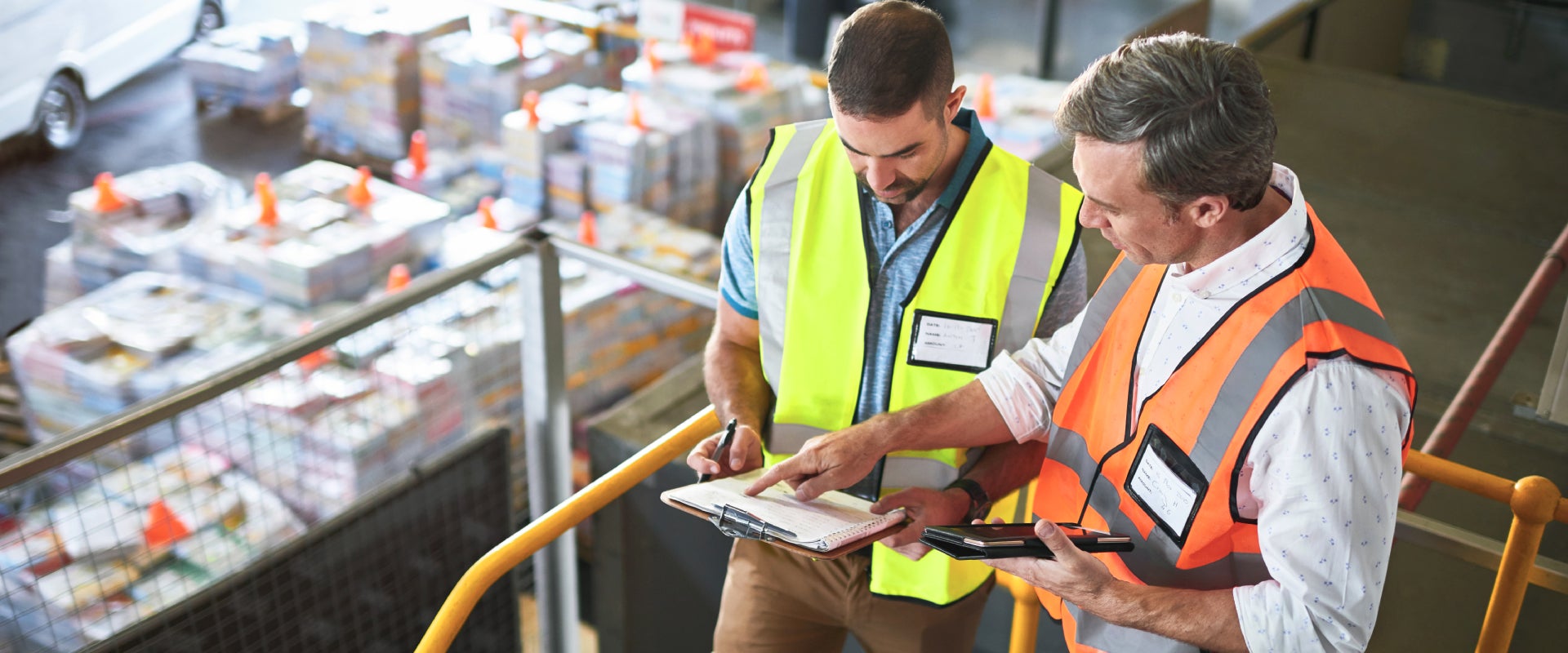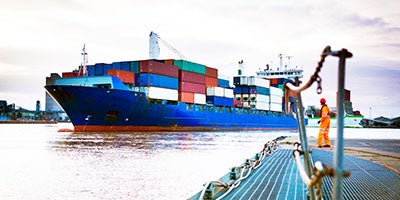
A megatrend since roughly 2000
Since around the turn of the century, a general trend known as ‘dematerialisation’ has persisted throughout advanced economies. It consists of reducing the use of materials to generate prosperity as these economies reach ‘peak stuff’. Experts have noted a sharp decline in tonnes of material used relative to gross domestic product (GDP), a trend which peaked in the early 2000s as observed in the US by Jesse Ausubel and Paul Waggoner and in the UK by Chris Goodall in 2011, and as updated in 2019 by Andrew McAfee in his book “More from Less”.
Peak stuff is not widely discussed in logistics because, on the face of it, it would not be good news for businesses that are largely driven by tonnage; however, peak stuff is widespread, and logistics and supply chain businesses must find ways to grow despite this trend.
The best indicator is known as the ‘material footprint’ of a country or region, which includes the materials used in manufacturing, food processing and construction activities domestically as well as the tonnes of materials extracted overseas and imported as finished goods (see Figure 1). These figures represent a total view of material consumption. Importantly, there is a peak in demand for material in these economies even as they continue to grow.
The trend is pretty clear — economic growth no longer requires more stuff. In fact, the divergence is very strong, and in 2018 UK GDP was 49% less material intensive than 2001’s peak (GDP is c.30% larger in real terms whilst material use is down c.30%). This applies widely across categories as well — the main categories of material consumption are biomass, metals, non-metal minerals and fossil fuels, and all categories show sharp falls in material intensity.
Meanwhile, total demand for materials globally is still growing, driven by China, India and other developing economies that have not reached peak stuff. The observation is not about supply shortages but instead about changes in how an advanced economy creates prosperity: it is becoming less dependent on material goods.
Why is GDP becoming less resource intensive?
Broadly speaking, the main causes behind this peak stuff phenomenon and the divergence between economic growth and material usage can be grouped into two categories: either long-term, widespread changes in consumption patterns or changing trends in the way output is produced within advanced economies.
Most of the causes identified are long-term trends, so we can therefore anticipate continued reduction in tonnes per million of GDP in advanced economies, and that this will gradually become a wider trend globally as other economies mature and reach peak stuff.
Changes in consumption patterns:
-
The ‘iPhone effect’ – Technology has driven consolidation of goods. For instance, whilst the share of UK residents with smartphones rose to 85% by 2019 — replacing all sorts of other items (cameras, books, diaries, music, maps, torches, compasses, etc.) — digital camera ownership fell to 18%.
-
The rise of services – Services (as opposed to primary industries or manufacturing) have risen as a share of GDP, from 82% in 2000 to 88% in 2019 in the EU, as evidenced by the transition from goods such as DVDs, CDs and books to streaming services such as Netflix, Spotify and Kindle and the trend to eat out more — in the US this increased to 53% of total food sales in 2019, up from 43% in 2000. When consumers eat out, not much more food is eaten (on average less is wasted), so the amount of stuff used is not increased, but consumers also pay for restaurant service and hence GDP has increased.
-
A decline in car use and switch to public transport – Car use has been declining in developed economies, with a ‘peak car’ trend supported by a shift towards public transport. New passenger car registrations in the US declined over the past 20 years, with new cars c.46% lower in 2019 than in 2000. In the UK, public transport increased its share of total passenger miles travelled per capita from 13% to 17% between 2002 and 2019 (although since then car transport has rebounded faster in the short term from Covid-19).
-
Make do and mend – Global consumer sentiment about environmental sustainability, reducing waste, consciously reducing consumption and reusing products has decreased consumption. ‘Right to repair’ legislation in the UK and EU, which was introduced in 2021, is set to exacerbate this trend.
Changes in production (see Figure 2):
-
Improved efficiency of manufacturing and construction – Competitive pressure and focus on environmental sustainability have led to a need for greater material efficiency: using less raw material in manufacturing and optimising material use in construction. For example, TVs have become lighter; a 25-inch cathode ray tube TV would typically weigh 45kg, but now a 32-inch liquid crystal display TV would weigh less than a third of that, at 12kg-14kg.
-
Improved energy efficiency of products – New cars in Great Britain in 2020 used 32% less fuel per kilometre than in 2000. In the EU as a whole, the specific consumption of large appliances (measured in kilowatt-hours per appliance) has decreased steadily since 2000: by 2019, efficiency gains were above 30% for refrigerators, washing machines and dryers; for freezers and dishwashers, gains were a little lower at c.28%.
-
Increased workforce participation – Greater workforce participation over the past 20 years has contributed to a growing economy without a corresponding increase in consumption, as those working do not consume significantly more than non-workers. In the UK in 2019 the employment level reached 76%, up from 73% in 2001. (Although this declined in 2020-21, rates post-Covid-19 recovered to c.75.5% in 2022.)
Mitigating factors
The sharp reduction in tonnes does not directly lead to a shrinking logistics industry because of certain mitigating factors:
-
Globalization and the rise of imports – Changes in the origin of raw materials have increased trade and long-distance movements and mean that the total tonnage across the quay at ports (specifically in the UK) is broadly flat. For example, between 1999 and 2018, UK extraction fell from 40% to 27% of tonnes used in the UK, meaning imports grew from 60% to 73%. Tonne-miles might even be increasing as items are manufactured farther from consumers; however, this has been somewhat slowed down by recent trends away from globalisation to more regional sourcing.
-
Growth of ecommerce and delivery services – Ecommerce and the growth of last mile delivery also increase freight movement post-Covid-19 online delivery has grown to be c.30% of retail sales, and this will grow further. Therefore, although less stuff may be used, the last mile is becoming a part of the logistics industry.
Logistics implications
Overall, logistics firms need to work out how to grow their business without growth in the total tonnes of material consumed in the major economies (see Figure 3).
Strategic options for logistics businesses to grow despite a reduction in overall volume
-
Share gain from investment – Investing in efficiency and new infrastructure can drive share gains. For example, the Port of Liverpool built a new terminal and took an increasing share of containerised goods, with its share among all major UK ports growing from 7.1% to 9.0% between 2014 and 2021.
-
Alignment with winning channels – Aligning with fast growth channels such as ecommerce instead of high street retail can expose logistics suppliers to faster growth. Covid-19 accelerated the transition to online sales, and now c.30% of retail sales are online. As online continues to gain share of sales, the logistics partners of online businesses will naturally gain share.
-
Focus on emerging markets – Expanding the customer base by going global can bring immediate growth and also exposure to faster-growing markets that have not yet reached peak stuff. Their rising wealth delivers growth in material footprint that outpaces the effects listed above that reduce ‘stuff’. Whilst some of the drivers of peak stuff listed above still apply (e.g. the iPhone effect, rise of services), the growth in wealth drives growth in material consumption — for example, in China, privately owned vehicles per capita increased from 3% in 2009 to 17% in 2020.
-
Vertical integration – Expanding along the value chain to increase overall revenue and earnings before interest, taxes, depreciation and amortization (EBITDA) by capturing more of the end-to-end revenue and profit, while serving customers across a broader range of needs and increasing penetration within existing customers through a more appealing offer. L.E.K. estimates that of the $100 billion in M&A in logistics businesses in 2021-22, more than 30% involved some consolidation along the value chain.
-
Diversification – Diversifying the offering, e.g. by providing additional non-carriage and non-storage services — tracking, verification of origin, customs, sustainability advice, etc. — allows logistics businesses to serve more client needs and grow revenue and EBITDA.
For more information, please contact strategy@lek.com.
03312023130315






